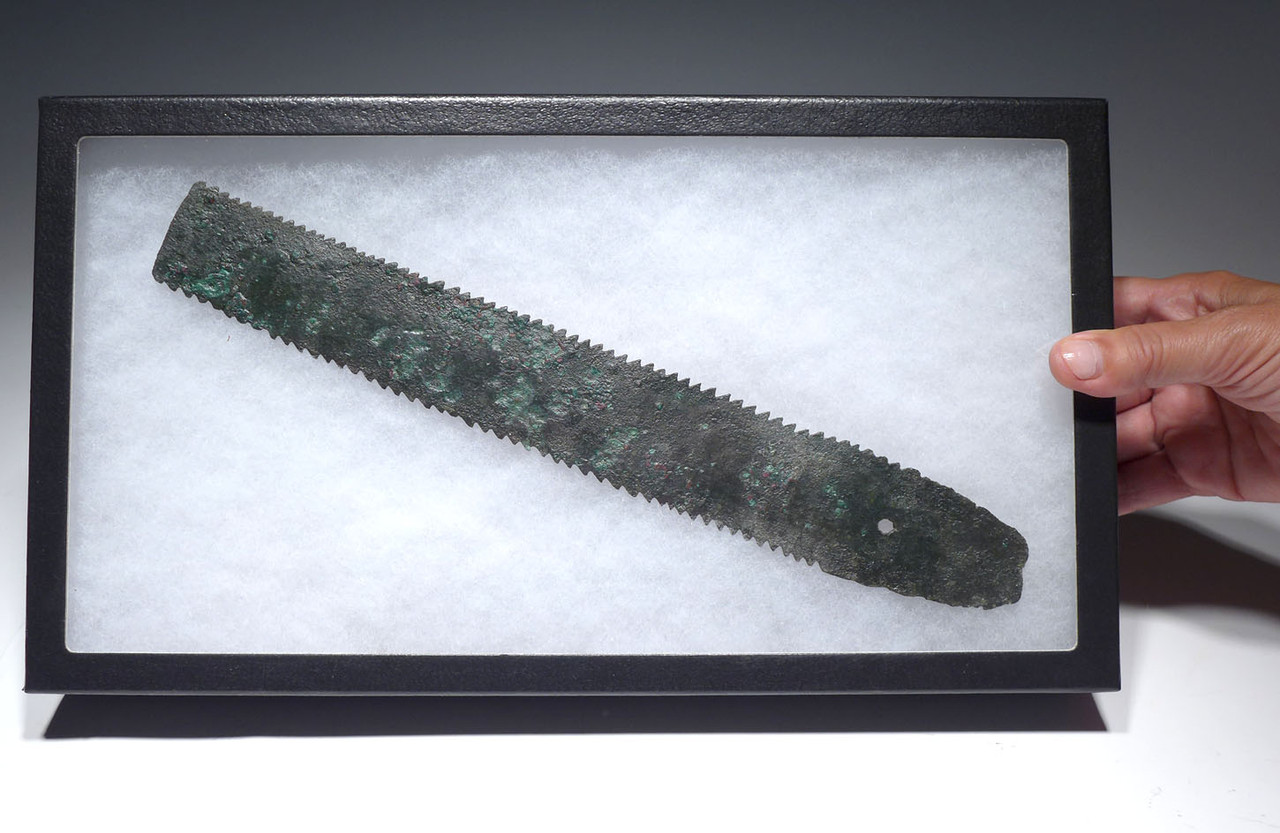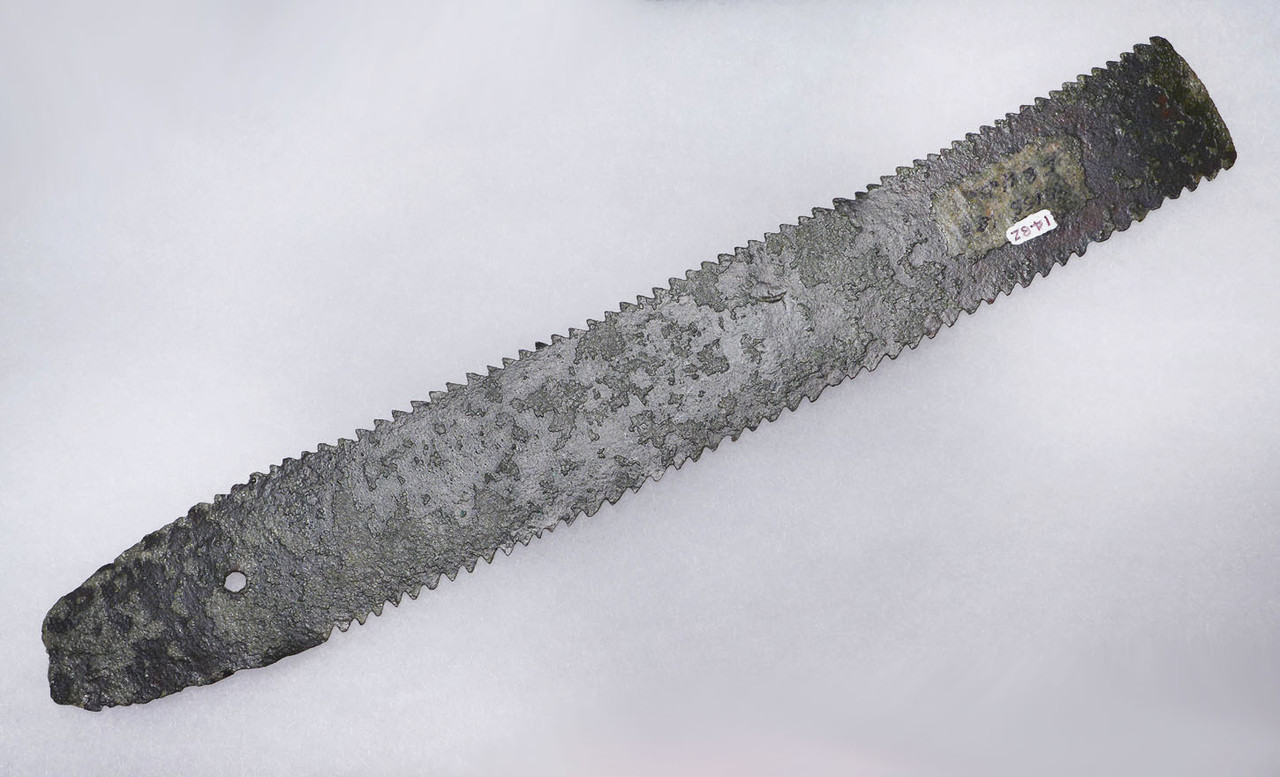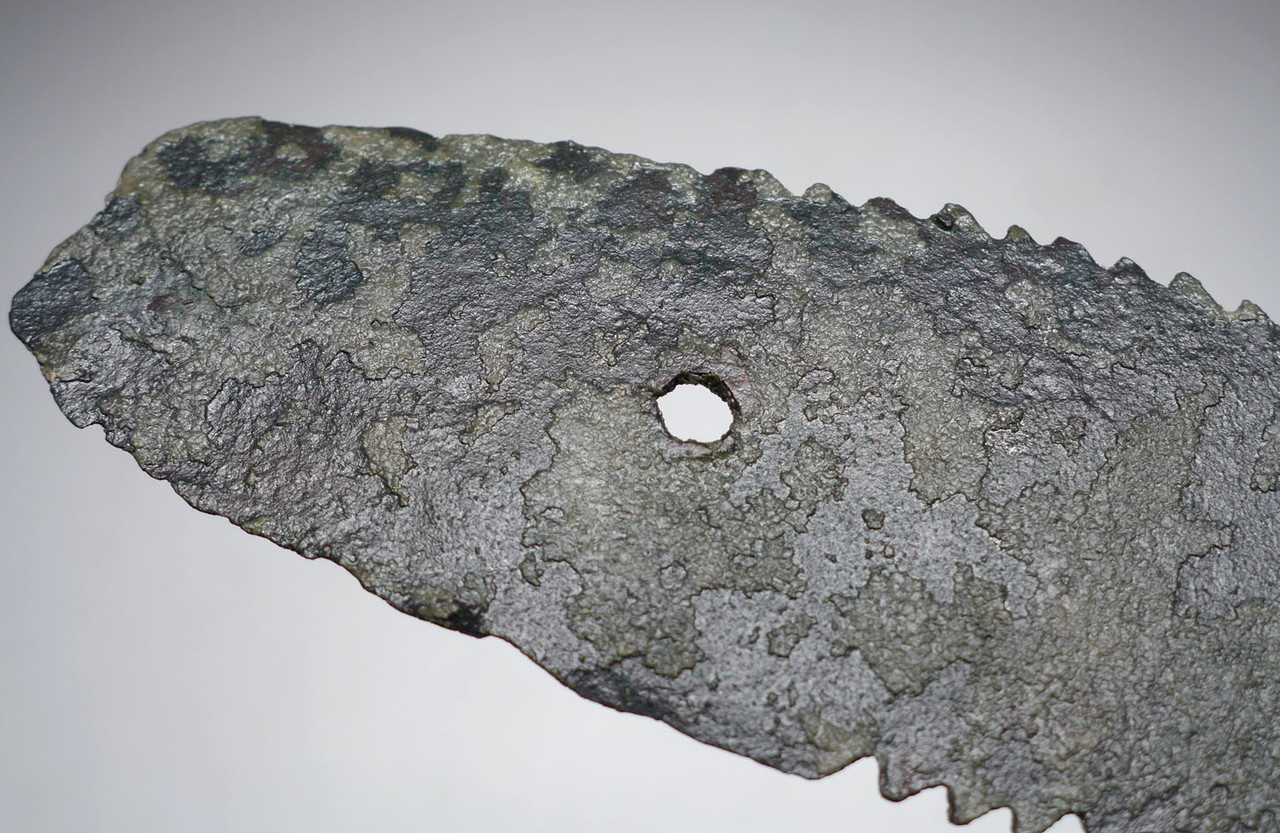Product Description
SEE MORE EUROPEAN BRONZE AGE ARTIFACTS
Not only for the immense scarcity of this ancient object, but also for its famous provenance, this large ancient medical surgical bone amputation saw is one of the RAREST objects we could offer from ANY Ancient culture! Dated to the Middle European Bronze Age and from the Tumulus Culture, this complete bone saw would have been a vital surgical tool to treat the many documented injuries from warfare of this period and culture. The Tumulus Culture was predominantly a warring society.
Too small and delicate to be used for construction or any wood-working tasks, the frequent conflicts of the culture and time necessitated all forms of medical surgery to treat wounds sustained in combat. This is one of only three ancient Bronze Age surgical bone saws we have ever come across, the other two having ancient Near Eastern origins, not European. The rarity of this specimen is underscored by having originally been first in the collection of famous British archaeologist Sir Arthur Evans, before moving through three subsequent collections after that.
The saw is complete with a hand-cut serrated double edge. The distal end is squared off and the proximal end shows the unfinished hammer-forging of the bronze sheet. This end is also pierced such that the base of the saw blade would have been inserted into a wooden handle and secured with a pin through this hole. Heavy ancient encrustations are intact on all surfaces and all saw teeth are perfectly preserved. Two collection labels are intact on the proximal end with the original label indicating its discovery in the year 1881, and Swiss origin.
The most envious and advanced collections of ancient objects are defined by the inclusion of items of this rare caliber in their inventory. We are confident you will NEVER see another antiquity of this type, in your lifetime. A truly holy-grail acquisition for the astute collector!
Ancient saws are EXTREMELY scarce tools and their use in ancient medical amputations are scientifically documented. Medical care and injuries from combat often required amputation to save the patient. Amputations were a form of punishment in the ancient world, as well.
This would make the ultimate gift for any physician, as well as a RARE addition to any ancient or antique medical tool collection!
This artifact has been professionally cleaned and conserved in our lab, being treated with a special sealer developed and formulated by us specifically for ancient metal preservation. The patina shows beautiful traits only found in authentic ancient weapons. It is a patina like this that the finest ancient bronzes are prized for and it is a patina like this that brings a premium in price and value of the specimen. There is no active bronze disease. Bronze disease forms a corrosive powder that will literally eat away an artifact over time and destroy it.
HISTORY
The Tumulus culture existed throughout Europe during the Middle Bronze Age (c. 1600 to 1200 BC). It was the descendant of the Unetice culture. Its heartland was the area previously occupied by the Unetice culture, and its territory included parts of Germany, the Czech Republic, Austria, Switzerland, the Carpathian Basin, Poland and France. It was succeeded by the Late Bronze Age Urnfield culture and part of the origin of the Italic and Celtic cultures.
The Tumulus culture was eminently a warrior society, which expanded with new chiefdoms eastward into the Carpathian Basin (up to the river Tisza), and northward into Polish and Central European Únětice territories. The culture's dispersed settlements centred in fortified structures.
As the name implies, the Tumulus culture is distinguished by the practice of burying the dead beneath burial mounds (tumuli or kurgans). The Tumulus culture was prevalent during the Middle Bronze Age. Tumuli have been used elsewhere in Europe from the Stone Age to the Iron Age yet, the term "Tumulus culture" specifically refers to the South German variant of the Bronze Age.
 US DOLLAR
US DOLLAR
 EURO
EURO
 AUSTRALIAN DOLLAR
AUSTRALIAN DOLLAR
 CANADIAN DOLLAR
CANADIAN DOLLAR
 POUND STERLING
POUND STERLING






















